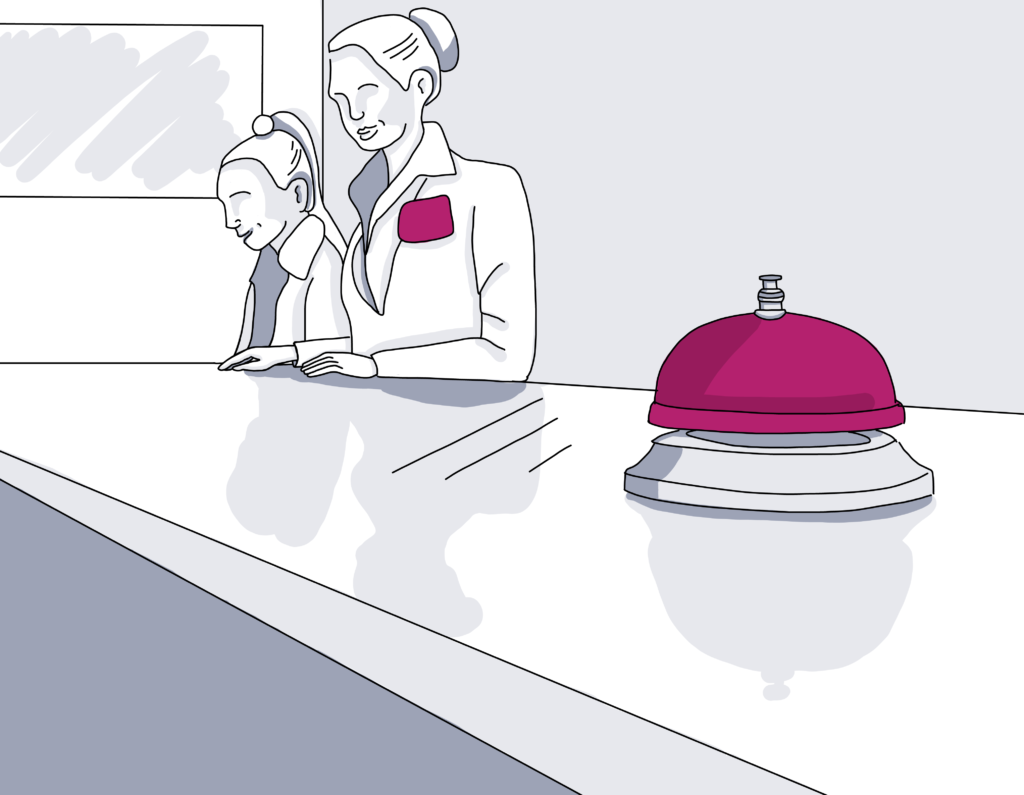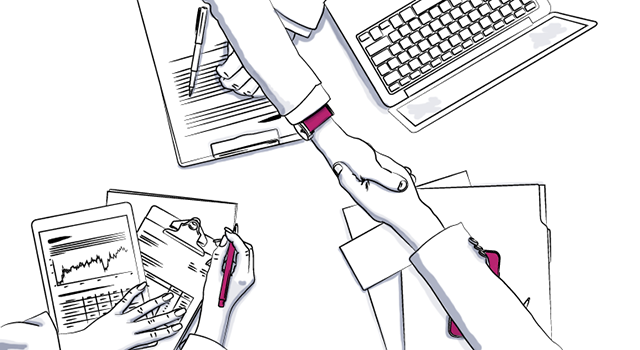
Wednesday Wisdom: 7 Simple Ways to Reduce Hotel Operating Costs While Sustaining Customer Service
In the hospitality industry, customer service is the name of the game. This fact represents both a challenge for hotels to meet and an opportunity that hotels can maximize.
The challenge, of course, is in controlling costs while keeping customer service high. It’s as true in hospitality as it is in any industry: bad service will lose you customers. The opportunity, however, is somewhat unique to hospitality. In a Harvard Business Review article about customer service, Matthew Dixon names hotels as one of the few industries that actually can drive loyalty by delighting their customers.

The savvy hotelier will be on the lookout for ways to reduce costs while continuing to delight customers. Here are seven ways to start:
1. Optimize labor scheduling and staff training
Labor cost is a significant proportion of a hotel’s operating expenses: roughly 50 percent, on average. Labor is an obvious place to begin looking for savings, but solutions require creative thought and careful balancing. Of course, you don’t want your staff overscheduled and underutilized, but at the same time, you don’t want to be caught short-staffed with disgruntled guests and stressed employees.
The first step in optimizing labor scheduling is to forecast staffing needs and plan accordingly”ideally on a timeline that makes sense with staff scheduling. Be sure to segment your forecasts: luxury suites and check-outs take longer to clean than smaller rooms and stayovers.
Then, consider cross-training employees so staff members can lend a hand in another role when needed. Cross-trained staff can provide coverage during another staff member’s vacation or a staffing emergency (such as a sudden sick day), and they can pitch in during a rush in their secondary function or a lull in their primary function.
Research suggests training staff members in just one additional responsibility is best, as is cross training staff members in skills they like. A waiter who enjoys his work, for example, may prefer cross training in another customer-facing position, such as host, more than he would enjoy a groundskeeping role.
2. Attend to utilities
Labor may be the highest operating cost for hotels, but according to the EPA’s Energy Star information for hotels, utilities are the fastest-growing. There is a well-established case for energy efficiency as a sound business practice, they write, and expectations for hoteliers to demonstrate their climate stewardship are growing. In other words, done right, this makes good business sense AND builds customer goodwill.
You can’t measure what you don’t track: Energy Star’s first low-cost recommendation is to track energy performance with their free and easy benchmarking tool. Or, if you’d like to outsource the whole process, look into energy audits in your state or region. Certain programs provide energy audits for free, with no obligation. Audits may examine lighting, HVAC, insulation and refrigeration systems, and make recommendations for reducing energy use. Other programs that vary by region provide rebates for purchasing energy-efficient equipment: look into these when it’s time to replace laundry, restaurant, or HVAC equipment.
Low-cost options that Energy Star recommends include:
- Switching to energy efficient light bulbs like compact fluorescent or LED
- Training staff to turn off lights, TVs, and heating or cooling in empty rooms
- Installing timers on bathroom heat lamps
- Installing occupancy sensors for lighting (Turning off fluorescent lights for 12 hours per day extends their calendar life”the time between replacements”by 75 percent, to nearly seven years! According to Energy Star, compact fluorescent bulbs tend to start paying for themselves after nine months.)
Let guests know about your energy-saving measures. Signs about the environmental friendliness of reusing towels, for example, can produce both cost savings and customer goodwill. To take your savings and your environmental appeal further, look into environmental recognitions like the TripAdvisor GreenLeaders leaf, which offers four levels of recognition.
3. Stay on top of maintenance
Don’t defer it! According to the US Department of Energy, clogged HVAC filters can increase energy consumption by 15 percent. Maintaining systems will minimize energy consumption, extend equipment life, and reduce the likelihood of a catastrophic breakdown. System breakdowns or other maintenance issues are costly to the hotel, inconvenient to guests, and give the hotel the aura of an undesirable, hassle-filled experience.
Develop and implement a schedule for maintaining your building’s equipment. For the HVAC system, this might mean scheduling the replacement of filters every one to six months, inspecting fans, bearings, belts, and the area around the air intake every six months, and inspecting for leaks, and cleaning and testing dampers yearly.
4. Improve the employee onboarding experience
Employee turnover is famously high in the hospitality industry. That’s a costly problem: It costs an employer an estimated 33 percent of a worker’s salary to find, hire, and train a replacement. Start your valuable employees off on the right foot by making your hotel employee onboarding as positive as possible. Standardize your onboarding with a process that helps employees feel welcome, understand expectations, and get up to speed successfully.
Consider using checklists to keep onboarding on track”before, during, and after an employee’s first day. Before their first day, for example, send an email outlining essential information like how to dress (including uniform requirements and costs, if applicable), where to park, who to report to, and when to arrive. Standardize the email with a template, but don’t forget to personalize it with the new hire’s name.
On the first day, move through a checklist of orientation items, paperwork requirements, and essential training. Provide the employee with information to keep about policies, procedures, and acronyms or hotel lingo. Assign a mentor who can answer questions, help them get their bearings, explain work tasks, and introduce them to the team.
5. Take advantage of technology to automate processes
The thoughtful and directed use of technology can increase efficiency, save time, reduce labor costs, and provide a positive experience for your customers.
Consider the many steps involved in event booking and F&B coordination. A sales & catering CRM can set automatic reminders for the sales team to follow up with leads, schedule onsite visits, send contracts, and get signed contracts returned. Streamlining this process saves staff time, keeps details organized and attended to, and makes planners’ lives easier.
Or consider offering a check-in and check-out app, eliminating the need for customers to wait in line. Beacon technology can even automatically push a mobile check-in option when guests walk in the door, and deliver a mobile check-out option the morning of departure. (Be aware that although the cost per beacon is low, the cost of developing an app and maintaining the beacon system can be several times greater. Look into pricing and pre-developed apps to determine whether this is a cost-effective measure.)
According to IBM, 85 percent of customer interactions will be handled with artificial intelligence by 2020. In the hotel industry, this percentage is likely to be lower, since customer service is a significant component of our product. But still, as consumers become used to AI instantly answering routine questions, there will be room for individual hotels and chains to test this type of technology, saving staff time or cutting down on call center needs.
For human-mediated customer service”and remember, hotels might always need more of that than other industries”direct human-to-human contact is a mainstay. According to Cvent, face-to-face interaction is especially important to Baby Boomers and guests and groups from the Greatest Generation.
Telephone calls to the front desk or a centralized call center are familiar and appreciated by many groups. The ability to text the front desk for requests or directions is increasingly popular as well. Some systems let hotels preload answers to common questions, or even use AI to generate an answer that the front desk staff can confirm or correct, and send on with a click.
Hotel managers can automate many processes with technology, freeing up employees to deliver services tech can’t manage. But it only happens that way when employees can use the systems, and the systems work well together. As you choose systems for your CRM, PMS, customer service, online booking, accounting, labor scheduling, housekeeping, EAM/CMMS or other needs, prioritize ease of use and integration with other systems. Then devote the necessary time to staff training.
6. Streamline F&B to reduce waste
Especially if you provide banquet F&B, streamline collaboration and execution with a computerized F&B system. Such a system can make measurable impacts on your profits: According to research from STR, hotels that use Social Tables Event Services Platform have higher F&B profits than those that don’t have the software.
Make F&B more efficient with restaurant and banquet menu options that use similar ingredients and prep. That way, although two groups in two different event spaces might have settled on two different menus, some ingredients and prep work can be shared. Use your event management system to examine the menu requirements for each day and make prep sheets for cooks so that they don’t over-prepare.
Watch your waste: Pay attention to what your end-of-meal plates say about portion size. You don’t want to send people away dissatisfied, but consider scaling back if food is often left uneaten. For beverages, decide whether you want bartenders to use jiggers or free-pour. Either way, train your staff to the standard and review every so often to ensure they are pouring accurately.
7. Look over your taxes and insurance
According to a CBRE survey of over 7,000 hotels, during 2018, property taxes averaged 3.6 percent of total operating revenue, and insurance costs averaged 0.8 percent. Review your property assessment and your insurance. How does yours stack up? Are both valuing your business and property correctly? If your numbers are unexpectedly high, you may wish to contest your property assessment, or investigate more affordable insurance options in your area.
We’re big fans of checklists and automated reminders here. Set notifications to work through the above tips, and implement the changes that make sense for the hotels in your portfolio. Before long your operation will be leaner”without tarnishing your sterling customer service.
Discover how Social Tables Group Sales & Catering CRM for hotels can streamline revenue driving processes”it’s easy to use! Or learn how to effectively preserve the value of long-term hotel assets.


